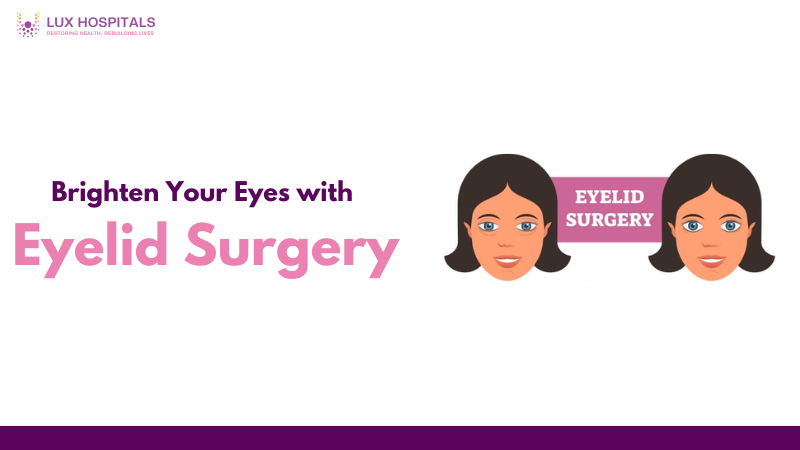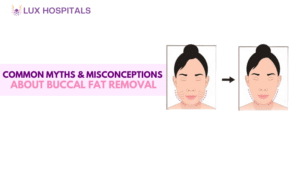Eyelid Surgery: What You Should Know

Blepharoplasty, another name for eyelid surgery, has grown in popularity as a cosmetic and functional technique to enhance the look and functionality of the eyes. This procedure can improve your appearance and vision, whether you have puffy lower bags or droopy upper eyelids. However, is it the best choice for you? Let’s dive into the potential benefits, risks, and key considerations to help you decide if eyelid surgery fits your goals.
What is Eyelid Surgery?
Eyelid surgery removes extra muscle, fat, and skin from the upper or lower eyelids. It can address issues caused by aging, genetics, or medical conditions like ptosis. Many people opt for it to achieve a more youthful and alert appearance. While often cosmetic, it can also correct vision problems caused by drooping lids.
The procedure can be tailored to address either the upper eyelids, lower eyelids, or both, depending on the individual’s needs. By tightening the skin and underlying muscles, eyelid surgery not only rejuvenates the eye area but can also alleviate discomfort caused by drooping eyelids.
Who is a Good Candidate for Eyelid Surgery?
You may be a suitable candidate if you’re in good health and have realistic expectations.
Ideal candidates often experience:
- Sagging or drooping upper eyelids
- Under-eye puffiness
- Blurred or impaired vision due to excess skin
- Non-smokers are generally preferred.
- Individuals without serious eye conditions are ideal.
- Consulting a board-certified surgeon is essential to determine candidacy.
- Eyelid surgery (blepharoplasty) is commonly sought by those affected by cosmetic or functional issues around the eyes.
Top Benefits of Eyelid Surgery
- Rejuvenates Your Appearance : The ability of eyelid surgery to produce a more youthful and rejuvenated appearance is one of its primary draws. You can appear less exhausted by getting rid of puffiness and sagging skin. The effects are frequently subtle yet significant. It makes your eyes look cleaner by enhancing their natural contour.
- Improves Vision: In some cases, droopy eyelids can impair peripheral vision. Blepharoplasty can remove the excess skin, causing visual blockage. This results in both cosmetic and functional improvements. Many patients report clearer and broader fields of view post-surgery.
- Boosts Self-Confidence: Feeling good about how you look has emotional benefits. After eyelid surgery, many patients notice an improvement in self-esteem and confidence. You tend to feel more positive when you look more alert and youthful. This may have an impact on the professional and personal facets of life.
- Long-Lasting Results: The outcomes of eyelid surgery tend to last several years. Upper eyelid results often remain stable for 5 to 7 years or more, while lower eyelid results are typically permanent. Maintaining a healthy lifestyle helps preserve the benefits longer. You won’t need frequent touch-ups like with injectables.
Potential Risks and Complications
Eyelid surgery carries risks, just like any other surgical procedure. Common side effects may include
- Swelling
- Bruising
- Dry eyes
- Infection
- Asymmetry between the eyes
Most side effects are temporary and improve with proper aftercare. Serious complications are rare when the procedure is done by a qualified professional. Choosing an experienced, board-certified surgeon greatly reduces the risk of complications.
Recovery and Downtime
Most people resume normal activities within ten to fourteen days following blepharoplasty, while recovery times vary.
- Recovery time after blepharoplasty varies, but most people resume normal activities within 10 to 14 days.
- Swelling and bruising are common during the first week.
- Prescription ointments help reduce discomfort and promote healing.
- Cold compresses can minimize swelling and speed up recovery.
It’s essential to follow your surgeon’s post-operative instructions carefully for optimal results.
How to Prepare for Eyelid Surgery?
Preparation involves medical evaluations, adjusting medications, and arranging transportation for the day of surgery.
- Undergo medical evaluations or lab tests as advised by your surgeon.
- Adjust or temporarily stop certain medications, such as blood thinners.
- Avoid smoking at least several weeks before surgery to promote healing.
- Refrain from using aspirin, anti-inflammatory drugs, or herbal supplements that can increase bleeding risk.
- Arrange for someone to drive you home after the surgery and stay with you for the first 24 hours.
Prepare your recovery area with essentials like
- Cold packs or ice compresses
- Clean gauze
- Prescribed eye drops or ointments
- Extra pillows to keep your head elevated
- Take time off from work and avoid strenuous activity for at least a week.
Follow your surgeon’s pre-operative instructions carefully for the best results and to minimize complications.
Conclusion
Choosing eyelid surgery is a personal decision that depends on your goals, health status, and expectations. It provides both practical and aesthetic advantages with relatively low risks and downtime. If you’re troubled by sagging eyelids or under-eye bags and want a long-lasting solution, this procedure could be ideal. Please consult a qualified plastic surgeon to explore whether it meets your needs. Ultimately, investing in your appearance can lead to improved confidence, comfort, and even better vision. Whether you’re motivated by aesthetics, practicality, or both, eyelid surgery can deliver transformative results.
Frequently Asked Questions
Although it varies from person to person, the optimal age range for eyelid surgery is usually 35 to 65. Around this time, aging symptoms like puffiness and drooping lids typically become apparent. Genetics, however, can raise issues earlier, leading younger individuals to think about surgery. Finding the ideal time requires careful consultation.
Eyelid surgery removes droopy skin and fat deposits to achieve a more youthful appearance. It brightens the eyes and reduces that tired, aged look. Many patients feel their overall face looks more vibrant post-surgery. The changes are subtle but often dramatically improve facial aesthetics.
Thanks to anesthesia and prescribed medications, most people experience minimal pain during and after eyelid surgery. Some tightness, swelling, and discomfort are normal in the first few days, and these symptoms typically fade within a week. Following post-op care instructions helps reduce discomfort and speed recovery.
The results of upper eyelid surgery generally last 5 to 7 years, while the effects of lower eyelid surgery are often permanent. Aging continues, so future sagging is possible. Maintaining a healthy lifestyle and avoiding sun damage to your skin can prolong results. Some patients choose revision surgery after many years if needed.
Side effects may include bruising, swelling, dry eyes, or temporary blurry vision. Most of these are mild and disappear with postoperative care. In rare cases, complications like asymmetry or infection can occur. Choosing a board-certified surgeon minimizes these risks.
The results of upper eyelid surgery generally last 5 to 7 years, while lower eyelid surgery are often permanent. Aging continues, so future sagging is possible. Maintaining a healthy lifestyle and protecting your skin from sun damage can prolong results. Some patients choose revision surgery after many years if needed.




















